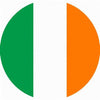What factors in your environment can affect gaze interaction?
Environmental factors that may make calibrating difficult include
- Bright lights that may cause reflections around the individual user. Look at lights above the user, bright lamps in front of or behind the user may also affect eye tracking. Although it is good to be aware of bright lights, it does not need to be dark in order to use eye tracking.
- Excess/Insufficient eye moisture - Watery eyes may make too many reflections but more often, dry eyes do not allow the illuminators in the eye tracker to reflect well.
- Eye conditions such as nystagmus and strabismus confuse the eye tracker. People with strabismus may be able to patch one eye in order to use the device with the more dominant eye.
- Some medicines cause eyes to dilate. When eye are dilated the eye tracker is unable to identify precisely where the user is looking.
- Sometimes the eye tracker may become dirty. If this occurs follow the instructions in the manual that came with your device or eye tracker in order to clean it.
- Reflective material on or near client
- Although most glasses will work fine with eye tracking, some do pose problems. Glossy lenses and shiny frames may distract the eye tracker from where the user is looking.















